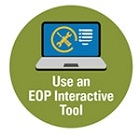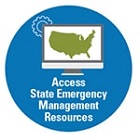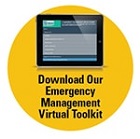|

Suicide Prevention and Intervention
In 2021, thirty percent of female high school students and 14 percent of male students reported serious thoughts of suicide. Suicide can be prevented by increasing mental health awareness, improving access to mental health services, developing comprehensive emergency operations plans (EOPs), and collaborating across systems. Within a school setting, an EOP is essential to preventing mental health crises and suicide. Specifically, it is a plan developed by a multidisciplinary planning team that outlines the roles and responsibilities of mental health practitioners and others within the school community in responding to a variety of threats and hazards and in activating various emergency functions. A school EOP is a tool for prevention and protection as well as response and recovery to create safe learning environments for students and staff to offer them the support they need before emergencies occur, through collaboration with partners across the school community.
Integrating Suicide Prevention and Intervention Protocols in EOPs
The
six-step planning process
outlined in the
Guide for Developing High-Quality School Emergency Operations Plans
and
The Role of Districts in Developing High-Quality School Emergency Operations Plans
can be used to integrate suicide prevention and intervention protocols in EOPs.
Step 1: Identify a core planning team. Developing a multidisciplinary planning team that includes mental health practitioners who are trained in suicide prevention and intervention, such as psychologists, social workers, nurses, etc., adds value to the breadth, depth, and scope of EOPs. The trained mental health practitioners, for instance, could meet with a suicidal student and discuss their feelings of suicidal thoughts and develop a safety plan with them.
Step 2: Identify and prioritize threats and hazards. The planning team determines what threats and hazards are unique to the school community and prioritizes them. Assessments, such as suicide screenings and suicide risk assessments, behavioral threat assessments, capacity assessments, and culture and climate assessments can be used as important sources of information in discovering and prioritizing potential threats or hazards.
Step 3: Develop goals and objectives and identify functions. The team selects the threats and hazards that will be addressed in the EOP, as well as what critical “functions” or activities must be activated, such as, but not limited to, ensuring continuity of operations before, during, and after a threat or hazard impacts the school community. Potential goals for responding to a mental health crisis, such as suicide, might include
- Goal (Before): Ensure that there is a procedure in place for students and staff to request mental health support.
- Goal (During): Provide Psychological First Aid, which can include recommending that students and staff access resources such as the 988 Lifeline.
- Goal (After): Provide individualized school-based mental health services to students and staff.
Step 4: Identify courses of action. Once the planning team creates goals and objectives for
threats, hazards, and functions in the previous step, they determine the
courses of action that address who, what, and how to achieve them. Together,
they form annexes or portions of the EOP. Here, the Suicide Annex is assembled,
as well as functional annexes, such
as the Recovery Annex.
Step 5: Format, write, approve, and share. The team develops a basic plan of the school EOP, formats the annexes, and reviews all sections. The Suicide Annex should be reviewed by the team including mental health practitioners that have training in suicide prevention, intervention, and postvention. After the plan is approved by leadership, the team should securely share portions with community mental health partners.
Step 6: Review, revise, and maintain. Finally, the planning team needs to implement the EOP. This means providing the whole school community with training and opportunities for practice. There are several ways mental health practitioners can get involved with this step, including
- Facilitating trainings and participating in and/or observing emergency exercises;
- Assisting the core planning team in determining when the Suicide Annex should be activated;
- Helping to ensure that the school practices emergencies using a trauma-informed approach and that everyone is aware of available resources, such as 988 Lifeline, and how to use available resources in collaboration with partners both within and outside of the school building; and
- Supporting debriefing efforts to capture lessons learned and identify areas of improvement. This process is referred to as an after-action report, and it evaluates results, identifies gaps or shortfalls, and documents lessons learned to strengthen the EOP.
Resources
Interested in learning more about how to include suicide prevention and intervention protocols in your EOP? Visit our webinars page to view.
If you have any questions or need technical assistance about developing
a comprehensive EOP addressing suicide or another EOP topic,
please do not hesitate to contact the REMS TA Center Help Desk via
email at info@remstacenter.org, toll-free phone 1-855-781-REMS [7367], or the online TA request form.
|










